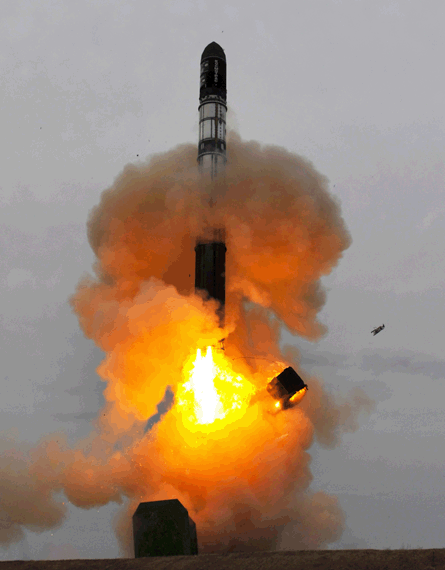It lasted over 10 years, instead of the envisioned five, and cost twice as much as originally planned, but the European Space Agency's CryoSat mission could have been even more challenging for the industrial partners were it not for the perseverance of staff.
Efforts to develop a remote-sensing satellite to measure the thickness of ice-sheets and polar ocean sea-ice cover finally reached fruition when CryoSat-2 was launched on 8 April. "The important part was having people who were in the correct posts: team spirit was always good and the restart of the team was very rapid," says Eckard Settelmeyer, director of Earth observation and science at Astrium Germany, CryoSat's prime contractor.
The restart to which Settelmeyer refers is the project's March 2006 go-ahead, which followed a launch failure in October 2005, when the first €75 million-plus ($101 million) CryoSat spacecraft plunged into the ocean. A failure on the Eurockot Rockot's second stage doomed years of work in seconds - decades of man hours, in fact, as Astrium has had 45 engineers working on CryoSat and, according to Settelmeyer, another 200 staff at 30-odd suppliers from 17 countries have been involved.
 |
|---|
© ESALauncher Kosmotras Dnepr, originally a Soviet nuclear missile |
The significance of retaining this team after the disaster was such that ESA director general Jean-Jacques Dordain told the CryoSat-2 (see box) launch event audience, "[the restart] was one of the quickest decisions member states have ever made and I thank them for that".
KEY FACTS
|
Amid these and other industrial changes, it was the fact that "the people involved directly took over" that made the project work, explains Settelmeyer. They decided not to simply build the replacement spacecraft from the same components. "It was a new spacecraft," says Settelmeyer. "We built in a second [radar] instrument for redundancy, enhanced battery capacity, memory, all improvements to enlarge the mission life time."
Now that CryoSat-2 is launched, the industrial partners are winding down their involvement with the commissioning phase. A major lesson they learned was how to work with what was a very limited budget, compared to that of, for example, ESA's Envisat satellite, which cost hundreds of millions of euros. Settelmeyer feels good about CryoSat's future. "I am confident it will work longer" than the four years planned, he says.
CROYSAT LIVES AGAIN TO STUDY OUR CLIMATE SYSTEM
CryoSat-2 replaced the original spacecraft that was lost after its launch failed in October 2005. Both were designed to measure changes to the ice sheets of Greenland, Antarctica and floating polar ocean ice. Launched on 8 April, CryoSat-2 is in an orbit that enables it to reach latitudes of 88° north and south, maximising its polar coverage.
To measure ice change the spacecraft uses what is known as a Synthetic Aperture Interfero-metric Radar Altimeter or SIRAL. There are two such altimeters on the spacecraft. The European Space Agency says that SIRAL is the first synthetic radar designed for ice. Previous radars have been optimised for the ocean and land. By measuring the change in thickness of marine and land-based ice, the satellite will help scientists understand ice's role in Earth's climate system.
Selected in 1999, CryoSat is an ESA Earth explorer mission. As such, it is designed to demonstrate new remote sensing technologies and provide scientific research capabilities for ESA's living planet programme, intended to improve our understanding of how the Earth's climate works and how human activity is affecting it. Two other Earth explorers launched recently are: Gravity field and steady-state Ocean Circulation Explorer (GOCE), which has been operational for a year; and the Soil Moisture and Ocean Salinity spacecraft (SMOS), which was orbited in November 2009.
Source: Flight International


























